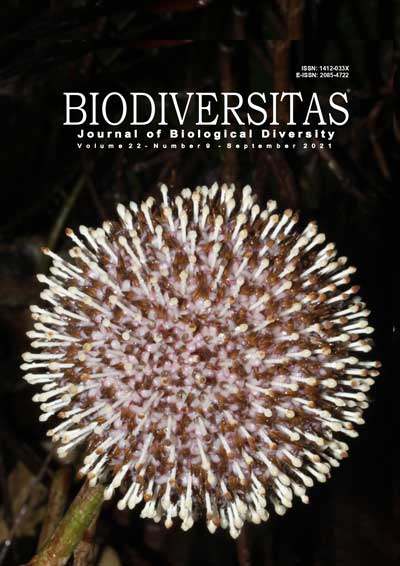Fractions and isolated compounds from Lansium domesticum fruit peel exhibited cytotoxic activity against T-47D and HepG2 cell lines
##plugins.themes.bootstrap3.article.main##
Abstract
Abstract. Fadhilah K, Wahyuono S, Astuti P. 2021. Fractions and isolated compounds from Lansium domesticum fruit peel exhibited cytotoxic activity against T-47D and HepG2 cell lines. Biodiversitas 22: 3743-3748. Lansium domesticum (Fam. Meliaceae), a tropical fruit (local name, Duku), has been reported to have various biological activities. At the moment we emphasize on searching compounds to have cytotoxic activity from the peel of L. domesticum. The study was initiated by extraction with EtOAc followed by fractionation that was monitored by thin-layer chromatography (TLC) and cytotoxicity against T-47D and HepG2 cells. The EtOAc extract of the sample was triturated with n-hexane to give n-hexane soluble (A) n-hexane insoluble fractions (B). The B fraction was fractionated by vacuum column chromatography using gradient solvent composition of n-hexane: acetone to give 18 fractions. According to TLC similarity pictures, fractions were combined to give 6 fractions (I-VI). Isolation was performed using preparative TLC, and the cytotoxic assay was performed using MTT method. The isolated compound was identified as a sesquiterpene having one aldehyde functional group, based on spectroscopic data.The isolated compound displayed cytotoxic activity on T-47D (IC50, 48.58 + 0.96 µg/mL) and HepG2 (IC50, 127.45 + 25.76 µg/mL).
